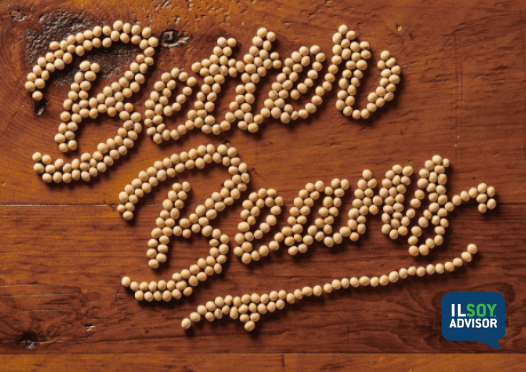ILSOYADVISOR POST
Better Yields. Better Profits: A Preview of the ILSoyAdvisor.com Soybean Summit in Effingham
Better Yields. Better Profits: A Preview of the ILSoyAdvisor.com Soybean Summit in Effingham
If you want bigger soybean yields and better profits—make sure the 2017 ILSoyAdvisor.com Soybean Summit in Effingham February 3 is on your calendar.
Illinois Field & Bean sat down with several of this year’s speakers; here’s a preview of some of the great information you’ll hear at the Summit.
How do you win in tough times?
Mike Boehlje, distinguished professor of agricultural economics at Purdue University
“Our analysis shows continued tight margins through much of this decade, unless something unexpected happens to soybean demand or big issues with supply,” says Boehlje. “Our recommendation is to focus is on controlling costs and being a best-in-class, low-cost producer.”
There are several short-term things you can do to reduce costs per bushel, to maintain profits and working capital.
- Do everything better. Establish a standard operating procedure for more precise management of each acre. Get smarter about your rates and timing on inputs.
- Buy right. Comparison shop. Look at spec sheets, but also consider value-added services and support you’ll get in the event something goes wrong.
- Maintain your working capital. Evaluate at your loan terms against your repayment capacity. In many cases, 10-year loans on farmland and three- to five-year terms on equipment may be too short for today’s economic conditions.
Above all, work to position yourself for the challenges and the opportunities of this economy.
“Don’t try to predict the future or the market, instead try to position yourself and stay resilient,” he suggests.
Accelerating Soybean Genetic Gain with Cutting Edge Technologies and Management
Kirk Reese, DuPont Pioneer Agronomy Research Manager
There are four major components in accelerated soybean genetic gain, notes Reese, which, when combined translate into opportunities on-farm.
“We’ll take a 30,000-foot view of these genetic gain components to give soybean growers an overview of their impact on the industry, as well as what they might mean for their farm,” Reese says.
- Environmental classification and influence on soybean yield. Don’t forget the important role the growing environment plays in yield. Variety and management are two sides of the yield triangle—field conditions, including planting date and temperature, must also be part of your decisions.
- Managing solar radiation capture throughout the growing season for greater yield. What does this mean to a soybean plant and what can we do to adapt our management so that the crop can benefit throughout the season?
- New technologies to accelerate genetic gain in soybeans will include information about DuPont Pioneer’s Accelerated Yield Technology (AYT™) system, which is a matrix of cutting edge molecular breeding technologies used by researchers to help increase rate of genetic yield gain, reduce yield variability and improve performance predictability.
What does genetic gain look like? For example, growing the soybean oil market with varieties containing altered fatty acid profiles.
Pursuit of sustainable high-yield soybeans with a focus on MOM
Howard Brown, Illini FS director of Nutrient Management and Environmental Stewardship
Interested in achieving sustainable, high-yielding soybeans? Listen to MOM, suggests Brown.
“MOM is the foundation of nutrient stewardship and should play a leading role in the management of every soybean field,” says Brown. “Nutrient management goes beyond corn; it needs to involve the whole orchestra of what you do on your farm. Stewardship cannot be allowed to take a backseat position—instead it must be a factor in everything you do. And MOM can help accomplish this goal.”
- MOM stands for:
- Maximizing nutrient utilization
- Optimizing yield
- Minimizing environmental impact
It includes a variety of tools and practices that growers can use to enhance their nutrient stewardship skills and success,” Brown adds. “We need to approach these factors on a scientific basis. The practices and diagnostic tools must help farmers ground-check what’s happening in a field while helping them make informed decisions that enhance nutrient stewardship.”
The Infallible Solution for Herbicide-Resistant Weeds
Aaron Hager, Associate Professor, Department of Crop Sciences, University of Illinois
Farmers and researchers have been talking about herbicide-resistant weeds for years, but the challenges posed by these species are becoming more prevalent, says Hager. In short, weed species have adapted to how we farm today.
“Biological systems are always changing, and we need to take that into consideration as we deal with herbicide resistance and the choices we make to control weeds,” says Hager. After all, adequate weed management must be a cornerstone of soybean production since weeds don’t do anything to increase yields. However:
- The herbicide resistance is no longer isolated, but affects additional weed species, more growers and weed management choices
- Research results suggest growers have several management options, but they must be diligent, diverse and integrated in their approach to weed management to ensure effectiveness and longevity of tools
- Once we’ve lost the effectiveness of a herbicide tool, it’s gone; we can’t go back.
- Dicamba is often mentioned as a way to reduce resistance. It certainly has its place, but it is only one management tool. It is imperative to maintain a diverse weed management approach to prolong the effective utility of dicamba.
o For instance, when it comes to Illinois waterhemp populations, these plants have evolved resistance to herbicides from six site-of-action groups, and resistance to dicamba is not a question of “if”, but “when.”
Don’t miss out
Funded in part by the Illinois soybean checkoff, these one-day Summits provide a fantastic lineup of expert speakers sharing the latest tools and technology along with actionable recommendations to boost yields and improve your bottom line.
Each Soybean Summit is free to Illinois soybean growers and offers the opportunity to hear details on advanced insights and production techniques from industry leaders, share ideas with fellow farmers and gather information on the latest products and services from sponsors and exhibitors.
Summits run from 8:00 a.m. to 4:00 p.m., with a full slate of speakers, food, networking and an on-site trade show. To learn more, visit http://www.ilsoy.org/summit.
Register online or call 888-826-4011. Seating at each location is limited, so register today!





Comments
Add new comment